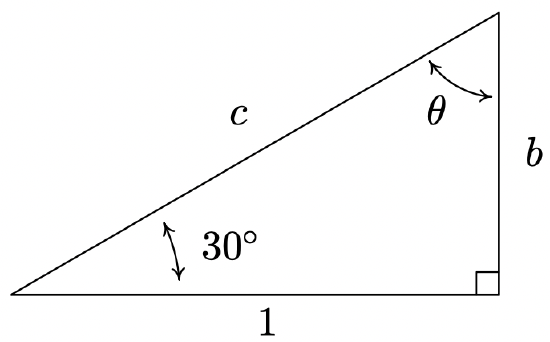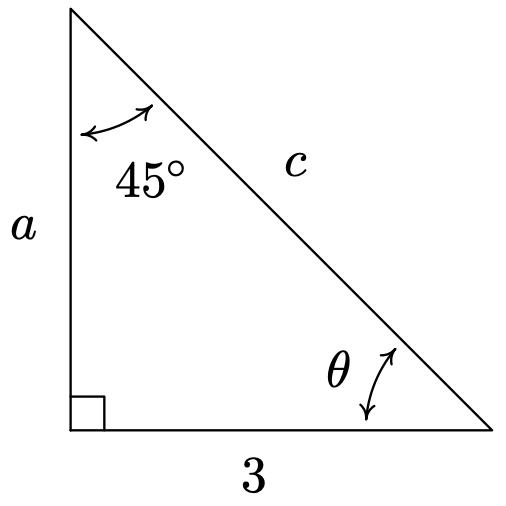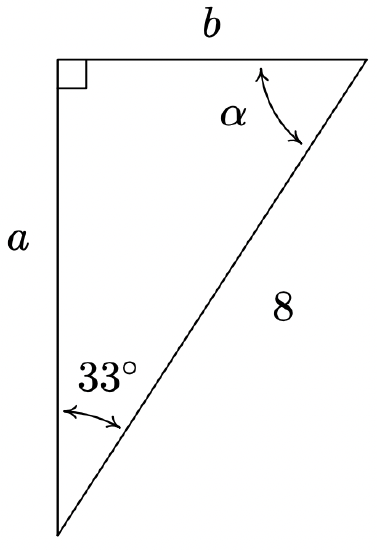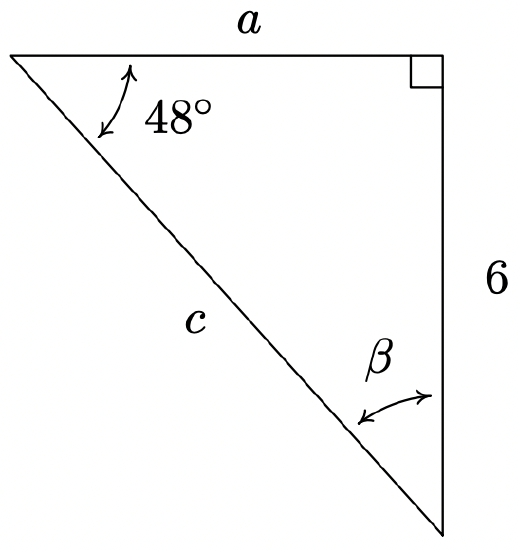10.2E: Exercises
- Page ID
- 120523
\( \newcommand{\vecs}[1]{\overset { \scriptstyle \rightharpoonup} {\mathbf{#1}} } \)
\( \newcommand{\vecd}[1]{\overset{-\!-\!\rightharpoonup}{\vphantom{a}\smash {#1}}} \)
\( \newcommand{\id}{\mathrm{id}}\) \( \newcommand{\Span}{\mathrm{span}}\)
( \newcommand{\kernel}{\mathrm{null}\,}\) \( \newcommand{\range}{\mathrm{range}\,}\)
\( \newcommand{\RealPart}{\mathrm{Re}}\) \( \newcommand{\ImaginaryPart}{\mathrm{Im}}\)
\( \newcommand{\Argument}{\mathrm{Arg}}\) \( \newcommand{\norm}[1]{\| #1 \|}\)
\( \newcommand{\inner}[2]{\langle #1, #2 \rangle}\)
\( \newcommand{\Span}{\mathrm{span}}\)
\( \newcommand{\id}{\mathrm{id}}\)
\( \newcommand{\Span}{\mathrm{span}}\)
\( \newcommand{\kernel}{\mathrm{null}\,}\)
\( \newcommand{\range}{\mathrm{range}\,}\)
\( \newcommand{\RealPart}{\mathrm{Re}}\)
\( \newcommand{\ImaginaryPart}{\mathrm{Im}}\)
\( \newcommand{\Argument}{\mathrm{Arg}}\)
\( \newcommand{\norm}[1]{\| #1 \|}\)
\( \newcommand{\inner}[2]{\langle #1, #2 \rangle}\)
\( \newcommand{\Span}{\mathrm{span}}\) \( \newcommand{\AA}{\unicode[.8,0]{x212B}}\)
\( \newcommand{\vectorA}[1]{\vec{#1}} % arrow\)
\( \newcommand{\vectorAt}[1]{\vec{\text{#1}}} % arrow\)
\( \newcommand{\vectorB}[1]{\overset { \scriptstyle \rightharpoonup} {\mathbf{#1}} } \)
\( \newcommand{\vectorC}[1]{\textbf{#1}} \)
\( \newcommand{\vectorD}[1]{\overrightarrow{#1}} \)
\( \newcommand{\vectorDt}[1]{\overrightarrow{\text{#1}}} \)
\( \newcommand{\vectE}[1]{\overset{-\!-\!\rightharpoonup}{\vphantom{a}\smash{\mathbf {#1}}}} \)
\( \newcommand{\vecs}[1]{\overset { \scriptstyle \rightharpoonup} {\mathbf{#1}} } \)
\( \newcommand{\vecd}[1]{\overset{-\!-\!\rightharpoonup}{\vphantom{a}\smash {#1}}} \)
Exercises
In Exercises 1 - 20, find the exact value of the cosine and sine of the given angle.
- \(\theta = 0\)
- \(\theta = \dfrac{\pi}{4}\)
- \(\theta = \dfrac{\pi}{3}\)
- \(\theta = \dfrac{\pi}{2}\)
- \(\theta = \dfrac{2\pi}{3}\)
- \(\theta = \dfrac{3\pi}{4}\)
- \(\theta = \pi\)
- \(\theta = \dfrac{7\pi}{6}\)
- \(\theta = \dfrac{5\pi}{4}\)
- \(\theta = \dfrac{4\pi}{3}\)
- \(\theta = \dfrac{3\pi}{2}\)
- \(\theta = \dfrac{5\pi}{3}\)
- \(\theta = \dfrac{7\pi}{4}\)
- \(\theta = \dfrac{23\pi}{6}\)
- \(\theta = -\dfrac{13\pi}{2}\)
- \(\theta = -\dfrac{43\pi}{6}\)
- \(\theta = -\dfrac{3\pi}{4}\)
- \(\theta = -\dfrac{\pi}{6}\)
- \(\theta = \dfrac{10\pi}{3}\)
- \(\theta = 117\pi\)
In Exercises 21 - 30, use the results developed throughout the section to find the requested value.
- If \(\sin(\theta) = -\dfrac{7}{25}\) with \(\theta\) in Quadrant IV, what is \(\cos(\theta)\)?
- If \(\cos(\theta) = \dfrac{4}{9}\) with \(\theta\) in Quadrant I, what is \(\sin(\theta)\)?
- If \(\sin(\theta) = \dfrac{5}{13}\) with \(\theta\) in Quadrant II, what is \(\cos(\theta)\)?
- If \(\cos(\theta) = -\dfrac{2}{11}\) with \(\theta\) in Quadrant III, what is \(\sin(\theta)\)?
- If \(\sin(\theta) = -\dfrac{2}{3}\) with \(\theta\) in Quadrant III, what is \(\cos(\theta)\)?
- If \(\cos(\theta) = \dfrac{28}{53}\) with \(\theta\) in Quadrant IV, what is \(\sin(\theta)\)?
- If \(\sin(\theta) = \dfrac{2\sqrt{5}}{5}\) and \(\dfrac{\pi}{2} < \theta < \pi\), what is \(\cos(\theta)\)?
- If \(\cos(\theta) = \dfrac{\sqrt{10}}{10}\) and \(2\pi < \theta < \dfrac{5\pi}{2}\), what is \(\sin(\theta)\)?
- If \(\sin(\theta) = -0.42\) and \(\pi < \theta < \dfrac{3\pi}{2}\), what is \(\cos(\theta)\)?
- If \(\cos(\theta) = -0.98\) and \(\dfrac{\pi}{2} < \theta < \pi\), what is \(\sin(\theta)\)?
In Exercises 31 - 39, find all of the angles which satisfy the given equation.
- \(\sin(\theta) = \dfrac{1}{2}\)
- \(\cos(\theta) = -\dfrac{\sqrt{3}}{2}\)
- \(\sin(\theta) = 0\)
- \(\cos(\theta) = \dfrac{\sqrt{2}}{2}\)
- \(\sin(\theta) = \dfrac{\sqrt{3}}{2}\)
- \(\cos(\theta) = -1\)
- \(\sin(\theta) = -1\)
- \(\cos(\theta) = \dfrac{\sqrt{3}}{2}\)
- \(\cos(\theta) = -1.001\)
In Exercises 40 - 48, solve the equation for \(t\).
- \(\cos(t) = 0\)
- \(\sin(t) = -\dfrac{\sqrt{2}}{2}\)
- \(\cos(t) = 3\)
- \(\sin(t) = -\dfrac{1}{2}\)
- \(\cos(t) = \dfrac{1}{2}\)
- \(\sin(t) = -2\)
- \(\cos(t) = 1\)
- \(\sin(t) = 1\)
- \(\cos(t) = -\dfrac{\sqrt{2}}{2}\)
In Exercises 49 - 54, use your calculator to approximate the given value to three decimal places. Make sure your calculator is in the proper angle measurement mode!
- \(\sin(78.95^{\circ})\)
- \(\cos(-2.01)\)
- \(\sin(392.994)\)
- \(\cos(207^{\circ})\)
- \(\sin\left( \pi^{\circ} \right)\)
- \(\cos(e)\)
In Exercises 55 - 58, find the measurement of the missing angle and the lengths of the missing sides.
- Find \(\theta\), \(b\), and \(c\).

- Find \(\theta\), \(a\), and \(c\).

- Find \(\alpha\), \(a\), and \(b\).

- Find \(\beta\), \(a\), and \(c\).

In Exercises 59 - 64, assume that \(\theta\) is an acute angle in a right triangle.
- If \(\theta = 12^{\circ}\) and the side adjacent to \(\theta\) has length 4, how long is the hypotenuse?
- If \(\theta = 78.123^{\circ}\) and the hypotenuse has length 5280, how long is the side adjacent to \(\theta\)?
- If \(\theta = 59^{\circ}\) and the side opposite \(\theta\) has length 117.42, how long is the hypotenuse?
- If \(\theta = 5^{\circ}\) and the hypotenuse has length 10, how long is the side opposite \(\theta\)?
- If \(\theta = 5^{\circ}\) and the hypotenuse has length 10, how long is the side adjacent to \(\theta\)?
- If \(\theta = 37.5^{\circ}\) and the side opposite \(\theta\) has length 306, how long is the side adjacent to \(\theta\)?
In Exercises 65 - 68, let \(\theta\) be the angle in standard position whose terminal side contains the given point then compute \(\cos(\theta)\) and \(\sin(\theta)\).
- \(P(-7, 24)\)
- \(Q(3, 4)\)
- \(R(5, -9)\)
- \(T(-2, -11)\)
In Exercises 69 - 72, find the equations of motion for the given scenario. Assume that the center of the motion is the origin, the motion is counter-clockwise and that \(t = 0\) corresponds to a position along the positive \(x\)-axis.
- A point on the edge of the spinning yo-yo in Exercise 50 from Section 10.1.
Recall: The diameter of the yo-yo is 2.25 inches and it spins at 4500 revolutions per minute.
- The yo-yo in Exercise 52 from Section 10.1.
Recall: The radius of the circle is 28 inches and it completes one revolution in 3 seconds.
- A point on the edge of the hard drive in Exercise 53 from Section 10.1.
Recall: The diameter of the hard disk is 2.5 inches and it spins at 7200 revolutions per minute.
- A passenger on the Big Wheel in Exercise 55 from Section 10.1.
Recall: The diameter is 128 feet and completes 2 revolutions in 2 minutes, 7 seconds.
- Consider the numbers: \(0\), \(1\), \(2\), \(3\), \(4\). Take the square root of each of these numbers, then divide each by \(2\). The resulting numbers should look hauntingly familiar. (See the values in the table on 722.)
- Let \(\alpha\) and \(\beta\) be the two acute angles of a right triangle. (Thus \(\alpha\) and \(\beta\) are complementary angles.) Show that \(\sin(\alpha) = \cos(\beta)\) and \(\sin(\beta) = \cos(\alpha)\). The fact that co-functions of complementary angles are equal in this case is not an accident and a more general result will be given in Section 10.4.
- In the scenario of Theorem 10.2.5, we assumed that at \(t=0\), the object was at the point \((r,0)\). If this is not the case, we can adjust the equations of motion by introducing a ‘time delay.’ If \(t_{0} > 0\) is the first time the object passes through the point \((r,0)\), show, with the help of your classmates, the equations of motion are \(x = r \cos(\omega (t - t_{0}))\) and \(y = r \sin(\omega (t-t_{0}))\).
Answers
- \(\cos(0) = 1\), \(\; \sin(0) = 0\)
- \(\cos \left(\dfrac{\pi}{4} \right) = \dfrac{\sqrt{2}}{2}\), \(\; \sin \left(\dfrac{\pi}{4} \right) = \dfrac{\sqrt{2}}{2}\)
- \(\cos \left(\dfrac{\pi}{3}\right) = \dfrac{1}{2}\), \(\; \sin \left(\dfrac{\pi}{3}\right) = \dfrac{\sqrt{3}}{2}\)
- \(\cos \left(\dfrac{\pi}{2}\right) = 0\), \(\; \sin \left(\dfrac{\pi}{2}\right) = 1\)
- \(\cos\left(\dfrac{2\pi}{3}\right) = -\dfrac{1}{2}\), \(\; \sin \left(\dfrac{2\pi}{3}\right) = \dfrac{\sqrt{3}}{2}\)
- \(\cos \left(\dfrac{3\pi}{4} \right) = -\dfrac{\sqrt{2}}{2}\), \(\; \sin \left(\dfrac{3\pi}{4} \right) = \dfrac{\sqrt{2}}{2}\)
- \(\cos(\pi) = -1\), \(\; \sin(\pi) = 0\)
- \(\cos\left(\dfrac{7\pi}{6}\right) = -\dfrac{\sqrt{3}}{2}\), \(\; \sin\left(\dfrac{7\pi}{6}\right) = -\dfrac{1}{2}\)
- \(\cos \left(\dfrac{5\pi}{4} \right) = -\dfrac{\sqrt{2}}{2}\), \(\; \sin \left(\dfrac{5\pi}{4} \right) = -\dfrac{\sqrt{2}}{2}\)
- \(\cos\left(\dfrac{4\pi}{3}\right) = -\dfrac{1}{2}\), \(\; \sin \left(\dfrac{4\pi}{3}\right) = -\dfrac{\sqrt{3}}{2}\)
- \(\cos \left(\dfrac{3\pi}{2}\right) = 0\), \(\; \sin \left(\dfrac{3\pi}{2}\right) = -1\)
- \(\cos\left(\dfrac{5\pi}{3}\right) = \dfrac{1}{2}\), \(\; \sin \left(\dfrac{5\pi}{3}\right) = -\dfrac{\sqrt{3}}{2}\)
- \(\cos \left(\dfrac{7\pi}{4} \right) = \dfrac{\sqrt{2}}{2}\), \(\; \sin \left(\dfrac{7\pi}{4} \right) = -\dfrac{\sqrt{2}}{2}\)
- \(\cos\left(\dfrac{23\pi}{6}\right) = \dfrac{\sqrt{3}}{2}\), \(\; \sin\left(\dfrac{23\pi}{6}\right) = -\dfrac{1}{2}\)
- \(\cos \left(-\dfrac{13\pi}{2}\right) = 0\), \(\; \sin \left(-\dfrac{13\pi}{2}\right) = -1\)
- \(\cos\left(-\dfrac{43\pi}{6}\right) = -\dfrac{\sqrt{3}}{2}\), \(\; \sin\left(-\dfrac{43\pi}{6}\right) = \dfrac{1}{2}\)
- \(\cos \left(-\dfrac{3\pi}{4} \right) = -\dfrac{\sqrt{2}}{2}\), \(\; \sin \left(-\dfrac{3\pi}{4} \right) = -\dfrac{\sqrt{2}}{2}\)
- \(\cos\left(-\dfrac{\pi}{6}\right) = \dfrac{\sqrt{3}}{2}\), \(\; \sin\left(-\dfrac{\pi}{6}\right) = -\dfrac{1}{2}\)
- \(\cos\left(\dfrac{10\pi}{3}\right) = -\dfrac{1}{2}\), \(\; \sin \left(\dfrac{10\pi}{3}\right) = -\dfrac{\sqrt{3}}{2}\)
- \(\cos(117\pi) = -1\), \(\; \sin(117\pi) = 0\)
- If \(\sin(\theta) = -\dfrac{7}{25}\) with \(\theta\) in Quadrant IV, then \(\cos(\theta) = \dfrac{24}{25}\).
- If \(\cos(\theta) = \dfrac{4}{9}\) with \(\theta\) in Quadrant I, then \(\sin(\theta) = \dfrac{\sqrt{65}}{9}\).
- If \(\sin(\theta) = \dfrac{5}{13}\) with \(\theta\) in Quadrant II, then \(\cos(\theta) = -\dfrac{12}{13}\).
- If \(\cos(\theta) = -\dfrac{2}{11}\) with \(\theta\) in Quadrant III, then \(\sin(\theta) = -\dfrac{\sqrt{117}}{11}\).
- If \(\sin(\theta) = -\dfrac{2}{3}\) with \(\theta\) in Quadrant III, then \(\cos(\theta) = -\dfrac{\sqrt{5}}{3}\).
- If \(\cos(\theta) = \dfrac{28}{53}\) with \(\theta\) in Quadrant IV, then \(\sin(\theta) = -\dfrac{45}{53}\).
- If \(\sin(\theta) = \dfrac{2\sqrt{5}}{5}\) and \(\dfrac{\pi}{2} < \theta < \pi\), then \(\cos(\theta) = -\dfrac{\sqrt{5}}{5}\).
- If \(\cos(\theta) = \dfrac{\sqrt{10}}{10}\) and \(2\pi < \theta < \dfrac{5\pi}{2}\), then \(\sin(\theta) = \dfrac{3 \sqrt{10}}{10}\).
- If \(\sin(\theta) = -0.42\) and \(\pi < \theta < \dfrac{3\pi}{2}\), then \(\cos(\theta) = -\sqrt{0.8236} \approx -0.9075\).
- If \(\cos(\theta) = -0.98\) and \(\dfrac{\pi}{2} < \theta < \pi\), then \(\sin(\theta) = \sqrt{0.0396} \approx 0.1990\).
- \(\sin(\theta) = \dfrac{1}{2}\) when \(\theta = \dfrac{\pi}{6} + 2\pi k\) or \(\theta = \dfrac{5\pi}{6} + 2\pi k\) for any integer \(k\).
- \(\cos(\theta) = -\dfrac{\sqrt{3}}{2}\) when \(\theta = \dfrac{5\pi}{6} + 2\pi k\) or \(\theta = \dfrac{7\pi}{6} + 2\pi k\) for any integer \(k\).
- \(\sin(\theta) = 0\) when \(\theta = \pi k\) for any integer \(k\).
- \(\cos(\theta) = \dfrac{\sqrt{2}}{2}\) when \(\theta = \dfrac{\pi}{4} + 2\pi k\) or \(\theta = \dfrac{7\pi}{4} + 2\pi k\) for any integer \(k\).
- \(\sin(\theta) = \dfrac{\sqrt{3}}{2}\) when \(\theta = \dfrac{\pi}{3} + 2\pi k\) or \(\theta = \dfrac{2\pi}{3} + 2\pi k\) for any integer \(k\).
- \(\cos(\theta) = -1\) when \(\theta = (2k + 1)\pi\) for any integer \(k\).
- \(\sin(\theta) = -1\) when \(\theta = \dfrac{3\pi}{2} + 2\pi k\) for any integer \(k\).
- \(\cos(\theta) = \dfrac{\sqrt{3}}{2}\) when \(\theta = \dfrac{\pi}{6} + 2\pi k\) or \(\theta = \dfrac{11\pi}{6} + 2\pi k\) for any integer \(k\).
- \(\cos(\theta) = -1.001\) never happens
- \(\cos(t) = 0\) when \(t = \dfrac{\pi}{2} + \pi k\) for any integer \(k\).
- \(\sin(t) = -\dfrac{\sqrt{2}}{2}\) when \(t = \dfrac{5\pi}{4} + 2\pi k\) or \(t = \dfrac{7\pi}{4} + 2\pi k\) for any integer \(k\).
- \(\cos(t) = 3\) never happens.
- \(\sin(t) = -\dfrac{1}{2}\) when \(t = \dfrac{7\pi}{6} + 2\pi k\) or \(t = \dfrac{11\pi}{6} + 2\pi k\) for any integer \(k\).
- \(\cos(t) = \dfrac{1}{2}\) when \(t = \dfrac{\pi}{3} + 2\pi k\) or \(t = \dfrac{5\pi}{3} + 2\pi k\) for any integer \(k\).
- \(\sin(t) = -2\) never happens
- \(\cos(t) = 1\) when \(t = 2\pi k\) for any integer \(k\).
- \(\sin(t) = 1\) when \(t = \dfrac{\pi}{2} + 2\pi k\) for any integer \(k\).
- \(\cos(t) = -\dfrac{\sqrt{2}}{2}\) when \(t = \dfrac{3\pi}{4} + 2\pi k\) or \(t = \dfrac{5\pi}{4} + 2\pi k\) for any integer \(k\).
- \(\sin(78.95^{\circ}) \approx 0.981\)
- \(\cos(-2.01) \approx -0.425\)
- \(\sin(392.994) \approx -0.291\)
- \(\cos(207^{\circ}) \approx -0.891\)
- \(\sin\left( \pi^{\circ} \right) \approx 0.055\)
- \(\cos(e) \approx -0.912\)
- \(\theta = 60^{\circ}\), \(b = \dfrac{ \sqrt{3}}{3}\), \(c=\dfrac{2 \sqrt{3}}{3}\)
- \(\theta = 45^{\circ}\), \(a = 3\), \(c = 3\sqrt{2}\)
- \(\alpha = 57^{\circ}\), \(a = 8 \cos(33^{\circ}) \approx 6.709\), \(b = 8 \sin(33^{\circ}) \approx 4.357\)
- \(\beta = 42^{\circ}\), \(c = \dfrac{6}{\sin(48^{\circ})} \approx 8.074\), \(a = \sqrt{c^2 - 6^2} \approx 5.402\)
- The hypotenuse has length \(\dfrac{4}{\cos(12^{\circ})}\approx 4.089\).
- The side adjacent to \(\theta\) has length \(5280\cos(78.123^{\circ}) \approx 1086.68\).
- The hypotenuse has length \(\dfrac{117.42}{\sin(59^{\circ})}\approx 136.99\).
- The side opposite \(\theta\) has length \(10\sin(5^{\circ}) \approx 0.872\).
- The side adjacent to \(\theta\) has length \(10\cos(5^{\circ}) \approx 9.962\).
- The hypotenuse has length \(c = \dfrac{306}{\sin(37.5^{\circ})}\approx 502.660\), so the side adjacent to \(\theta\) has length \(\sqrt{c^2 - 306^{2}} \approx 398.797\).
- \(\cos(\theta) = -\dfrac{7}{25}, \; \sin(\theta) = \dfrac{24}{25}\)
- \(\cos(\theta) = \dfrac{3}{5}, \; \sin(\theta) = \dfrac{4}{5}\)
- \(\cos(\theta) = \dfrac{5\sqrt{106}}{106}, \; \sin(\theta) = -\dfrac{9\sqrt{106}}{106}\)
- \(\cos(\theta) = -\dfrac{2\sqrt{5}}{25}, \; \sin(\theta) = -\dfrac{11\sqrt{5}}{25}\)
- \(r = 1.125\) inches, \(\omega = 9000 \pi \, \frac{\text{radians}}{\text{minute}}\), \(x = 1.125 \cos(9000 \pi \, t)\), \(y = 1.125 \sin(9000 \pi \, t)\). Here \(x\) and \(y\) are measured in inches and \(t\) is measured in minutes.
- \(r = 28\) inches, \(\omega = \frac{2\pi}{3} \, \frac{\text{radians}}{\text{second}}\), \(x = 28 \cos\left(\frac{2\pi}{3} \, t \right)\), \(y = 28 \sin\left(\frac{2\pi}{3} \, t \right)\). Here \(x\) and \(y\) are measured in inches and \(t\) is measured in seconds.
- \(r = 1.25\) inches, \(\omega = 14400 \pi \, \frac{\text{radians}}{\text{minute}}\), \(x = 1.25 \cos(14400 \pi \, t)\), \(y = 1.25 \sin(14400 \pi \, t)\). Here \(x\) and \(y\) are measured in inches and \(t\) is measured in minutes.
- \(r = 64\) feet, \(\omega = \frac{4\pi}{127} \, \frac{\text{radians}}{\text{second}}\), \(x = 64 \cos\left(\frac{4\pi}{127} \, t \right)\), \(y = 64 \sin\left(\frac{4\pi}{127} \, t \right)\). Here \(x\) and \(y\) are measured in feet and \(t\) is measured in seconds

